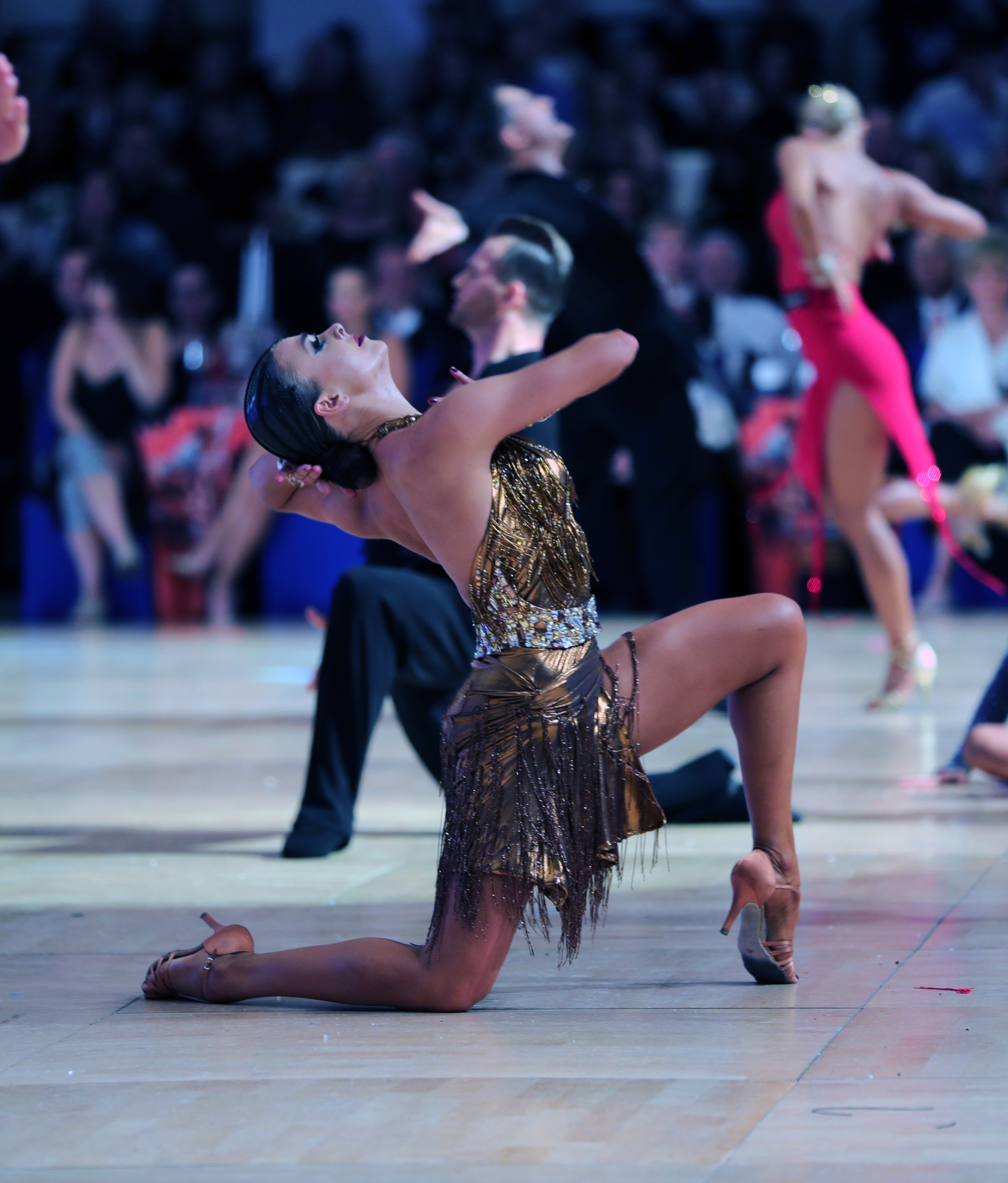-
The Foxtrot is one of the most deceiving dances. It looks very easy, but is one of the most difficult dances to do. The dance originated in 1913 when a vaudeville performer by the name of Harry Fox performed a little trot which appealed to the social dance teachers in New York and thus the Foxtrot was born. It has gone through many changes since that time, and is now comprised of more soft and fluid linear movements.
-
As the name implies, the Quickstep is a very quick and lively dance, comprised of hops, skips and kicks. The dance began as a quick version of Foxtrot mixed with the Charleston, and musical Jazz influences.
-
The Tango originated in the bordellos of Buenos Aires, Argentina, and is done in a slightly different manner than other dances. The hold is very different, with the lady’s arm under the mans, which creates a tighter hold for a quick staccato action and stylized poses.
The American Style Tango is a progressive moving along the line of dance using body movement. A staccato movement of the feet and flexed knees highlight the dramatic style of the Tango.
-
The Viennese Waltz is a fast Waltz which originated in Austria. Joseph Lanner and Johann Strauss wrote the first waltzes in the early 19th century. In the middle of the 20th century, the German, Paul Krebs choreographed the Viennese Waltz style to which we dance today. The dance enjoyed a great deal of popularity not only in Europe, but also in America, and has been used in many Hollywood productions.
-
The Waltz appeared as a fashionable dance in Bohemia, Austria, Bavaria and other parts of Europe in the late 1700’s. Danced in 3/4 timing, the recurring, even beats of music send the dancers whirling around the floor enjoying the thrill of the Waltz movement.

